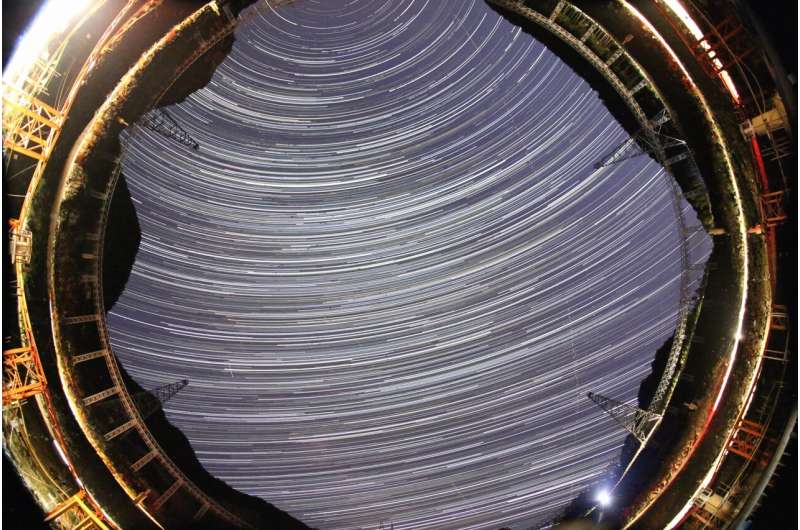Phys.org June 28, 2023
The research by an international team of researchers (China, Germany, Greece, Australia) was based on pulsar timing observations carried out with the Five-hundred-meter Aperture Spherical radio Telescope (FAST). Observing and timing a group of millisecond pulsars with high rotational stability enabled the direct detection of gravitational waves (GWs). The GW signals could be identified from the spatial correlations encoded in the times-of-arrival of widely spaced pulsar-pairs. According to the researchers this short article serves as a “table of contents” for a forthcoming series of papers related to the CPTA Data Release 1 (CPTA DR1) which uses observations from the Five-hundred-meter Aperture Spherical radio Telescope… read more. Open Access TECHNICAL ARTICLE

FAST helps find key evidence for the existence of nanohertz gravitational waves with its high sensitivity. Credit: NAOC of CAS